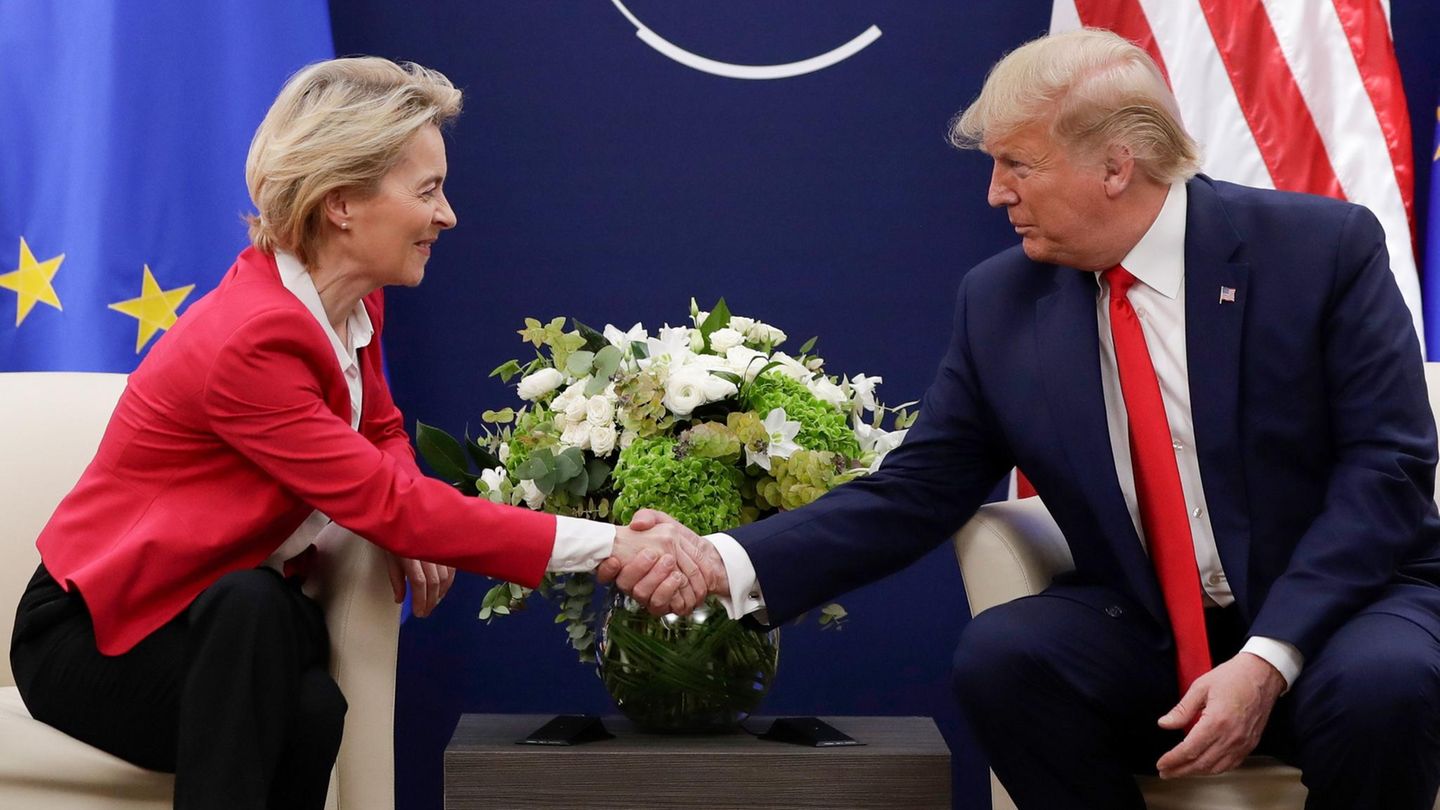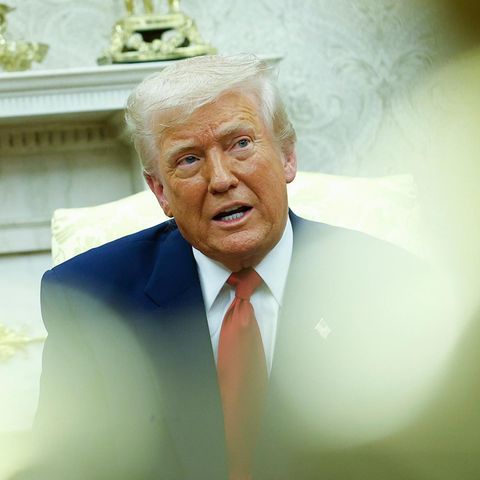Agreement with the USA
Donald Trump and Europe agree in the customs dispute
Copy the current link
Add to the memorial list
The conversations in the customs dispute between the USA and Europe were probably not child’s play. But in the end there is a deal – the EU is again scratched by the trade war.
The EU and the United States have agreed on a fundamental agreement to defuse the customs conflict that has been going on for months. This was announced by both sides after a top conversation by EU Commission President Ursula von der Leyen and US President Donald Trump in Scotland.
“It will be the biggest of all deals,” said Trump during the announcement of the agreement. The Leyen expressed that it was a difficult process. “Now we have it, and that’s good.” Trump’s information is said to be a customs set to most imports 15 percent, including for the automotive industry.
The EU will agree to buy energy from the United States worth $ 750 billion and to invest an additional $ 600 billion in the USA, said the US President.
He described the agreement on energy as the “very important component” of the agreement. The tariffs on the import of steel and aluminum therefore remain 50 percent as before. “This is a worldwide affair that stays the way it is,” he emphasized.
In between “very controversial” conversations
It was already clear in advance that imports from the EU to the United States were loaded with significantly higher tariffs than before the start of the second term of Trump. An agreement had already arisen before the meeting in a conversation between EU diplomat with US trade minister Howard Lutnick on Saturday evening.
From EU circles it was said that an agreement with US import duties in the amount of 15 percent and numerous exceptions were possible. The present agreement therefore provided for exceptions for important sectors such as aircraft, wood and spirits – with the exception of wine. In return, the EU must commit itself to buy more US liquid gas (LNG) and promise investments.
The talks on Saturday evening were “at times very controversial”, the “Financial Times” reported. Accordingly, questions about tariffs about medication and pharmaceutical products were still open.
The aim of the EU in the negotiations had been to remain well below the 30 percent density of Trump. Trump was a hard but fair negotiator, said by the Leyen shortly before the conversation.
Commercial war averted with the United States
If the EU had not entered the deal, a further escalation of the trading dispute would have threatened. From August 1st, Trump wanted to enter into force further tariffs if the EU does not meet him in trade issues. The Republican justified his course with the fact that he wants to correct alleged trade weights and shift productions to their home country – according to the motto “America First”.
At the same time, customs revenues should serve to at least partially counter its expensive election promise of large tax cuts. The EU Commission, on the other hand, sees the tariffs as not justified and doubts that they are compatible with the rules of the World Trade Organization (WTO).
Germany demanded fast deal
The fact that the EU is now accepting a compromise is that many Member States estimate the risks of an escalation of the trade dispute as more important than higher tariffs. For example, Chancellor Friedrich Merz (CDU) had recently called for a quick agreement: “Better and simply as lengthy and complicated and in the negotiation status for months,” he said.
It also played a role that the car industry and the steel and aluminum industry, for example, were suffering from the high tariffs in recent months.
The EU’s negotiating position was also weakened by the dependence of Europe on the US military skills. It was feared that Trump could again question the support promise given by NATO in the event of an escalation of the trading dispute. In view of the threats from Russia, this was seen as a great risk, especially in eastern EU countries.
EU threatened retaliation tariffs
In the economic sector, however, the EU could have put the United States under considerable pressure on counter -tariffs. In the negotiations, the EU Commission had threatened additional taxes on the import of industrial and agricultural goods such as aircraft, motorcycles, beef, whiskey or citrus fruits.
In addition, EU export restrictions for certain products worth 4.4 billion euros were considered. These include, for example, steel scrap and chemical products, which have so far been often imported by US companies.
Trump had sparked a customs conflict with trading partners all over the world at the beginning of April. He last threatened the EU with tariffs of 30 percent, which should come into force on August 1, if there is no agreement before. An increased customs duty of 25 percent already applies to cars, and surcharges of 50 percent are due for steel and aluminum products. So far, medication and pharmaceutical products have been excluded.
Note: This post has been updated.
AFP
CL
Source: Stern
I have been working in the news industry for over 6 years, first as a reporter and now as an editor. I have covered politics extensively, and my work has appeared in major newspapers and online news outlets around the world. In addition to my writing, I also contribute regularly to 24 Hours World.






